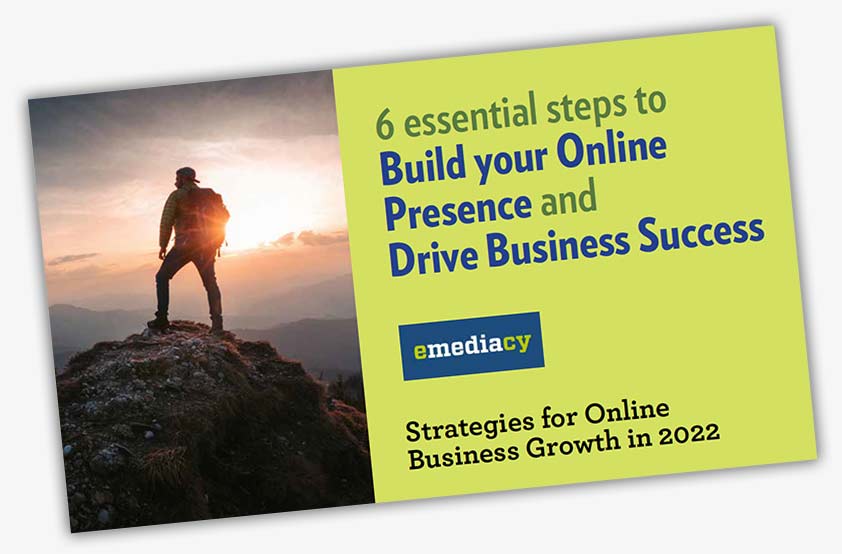Step 1: Research your target market
To research your target market for SEO content marketing, you need to understand industry trends, buyer personas, and pain points. Start by identifying key characteristics of your current customers and analyzing your competitors’ followers. Survey your audience to understand their preferences, needs, and challenges. Segment your audience and develop personas to create personalized content that meets target groups’ specific needs. Conduct comprehensive keyword research and make a list of those that your buyer personas interact with. Focus on creating a positive user experience and delivering the most relevant information possible. To resonate with your audience, you must first know who they are and what they are looking for. By understanding your target audience’s challenges and concerns, you will have a better idea of what types of topics they might search for online. This is a great starting point for SEO keyword research and content marketing topic generation.
Whether you are looking for a US-based copywriter, or an AI assisted content creation process, Emediacy has you covered. We have a wide variety of writers specializing in particular markets that can create engaging, relevant content for your business. Great content makes it easier to generate leads, boost brand awareness, and gain conversions. Working with Emediacy to create content is a great way to ensure high-quality content.
Step 2: Define Your Topic Area
Step 2 of content creation involves defining your topic area. This means identifying your area of expertise and incorporating audience data to develop a variety of content topics. To effectively combine content and SEO marketing efforts in this stage, start with keyword research to ensure you’re writing about the right things. Compile a list of about 10 words associated with your product or service and use an SEO tool to research these words, identify their search volume and come up with variations that make sense for your business. This will help you associate your topics with popular short-tail keywords without dedicating individual blog posts to these keywords. For instance, if you’re a swimming pool business trying to rank for “fiberglass pools,” you can use “fiberglass pool prices” or “fiberglass pool cost” to achieve additional rankings for the overall keyword of fiberglass pools. Remember, your purpose and expertise should be at the heart of everything you write, and incorporating SEO strategies will help your audience find your content.
Step 3: Create great content
To create great content that can be optimized for SEO, start by conducting thorough keyword research. Use this information to generate topic ideas and create high-quality content that resonates with your target audience. Make sure your content is well-written, easy to read, and uses relevant examples to help readers understand complex topics. Use multimedia such as images, videos, and infographics to enhance the user experience and make your content more engaging. When optimizing your content for SEO, make sure to use your keywords naturally throughout the content and in the title, meta description, and header tags. Additionally, consider updating pre-existing content on your website as you come across more information. Remember, quality content is key to your SEO performance, so invest time and effort in creating content that fulfills search intent and leads visitors to stay on the page and eventually convert.
Step 4: Optimize at every turn
To optimize content and SEO marketing efforts, it is crucial to have a well-defined strategy in place and continuously refine it. Start by conducting thorough keyword research to identify high-ROI keywords to incorporate into your content. Use these keywords in your H1, H2s, and meta descriptions to improve your page ranking. Additionally, prioritize your audience’s needs and create valuable content that builds customer loyalty and brand identity. Keep your content fresh and current by updating articles and removing broken links. To further optimize your SEO, utilize link building strategies and take advantage of SEO opportunities such as holidays. Track your progress and refine your strategy monthly to stay ahead of competitors and improve your search engine rankings. Remember, continuous optimization is key to a successful SEO content strategy.
Step 5: Identify keywords that meet your audience’s needs and topic area
To effectively target the right keywords for your content, follow these steps:
- Start with comprehensive keyword research. Compile a list of 10-15 short-tail keywords associated with your product or service using an SEO tool like Google’s Keyword Tool or Ahrefs. Rank the list based on monthly search volume.
- Identify your topic area. What information can you uniquely provide to your target audience that sets you apart as a voice of authority? This will guide your research for audience interest, keyword matches, and SEO content creation.
- Develop content ideas and topics obtained from the keyword research. Utilize different content formats to make the most of the research.
- Incorporate your audience data to develop a variety of content topics. These are subjects that are within your field and are material your viewers will want to read.
- Update pre-existing content on your website as you come across more info.
For example, a swimming pool business can use the short-tail keyword “fiberglass pools” as the overarching topic for their content. They can then identify related keywords like “fiberglass pool prices” or “fiberglass pool cost” to achieve additional rankings. By knowing the most popular keywords among their target audience, the business can optimize their site for search engines and develop valuable content that will improve their site’s reputation with search engines.
In conclusion, identifying the right keywords for your content requires comprehensive keyword research, identifying your topic area, developing content ideas and topics, and updating pre-existing content. By following these steps, you can effectively target the right keywords for your content and meet your audience’s needs while improving your SEO marketing efforts. Remember to utilize tools like SEO tools to research and rank your keywords and update your content regularly to stay relevant and engaging to your audience.
Step 6: Set up a content plan monthly content plan
Creating a Monthly Content Plan for SEO Marketing
To create a monthly content plan that aligns with your SEO goals, follow these key steps:
- Conduct Keyword Research: Identify the long-tail keywords that are relevant to your industry and audience. Use these keywords to generate a list of topics for your content plan.
- Build Pages and Set Up a Blog: Create pages for each of your topics and set up a blog. This will be the foundation for your content plan.
- Develop an Editorial Calendar: Create a schedule that dictates when you will publish new content and what type of content it will be. Use Outlook or Google Calendar to share the editorial calendar with your team and set up reminders for authors.
- Assign Content to Your Team: Identify the authors who will be responsible for creating each piece of content. Make sure to brainstorm with your team to ensure that each piece of content is unique and valuable.
- Track Progress and Measure Success: At the end of each month, track your progress and measure the success of your content. Use this data to refine your content plan and improve your SEO strategy.
By following these steps, you can create a monthly content plan that combines both content and SEO marketing efforts. Remember to be realistic in how many pieces of content you can create per week or month, and to leave room for last-minute news or updates. Utilize different content formats, such as videos and infographics, to make the most of your research. And don’t forget to update pre-existing content on your website as you come across more information. With a well-thought-out content plan and editorial calendar, you can stay on top of your content marketing and improve your SEO strategy.
Step 7: Host your own content
Hosting your own content is essential to maintaining control over your online presence and improving your content and SEO marketing efforts. By hosting your own content, you can ensure that your material is published exactly as you want it, without the risk of being evicted from a third-party platform. To choose a hosting platform, consider factors such as cost, ease of use, and available features. Some popular hosting providers include Bluehost, SiteGround, and HostGator. When selecting a hosting provider, it’s important to consider factors such as uptime, security, and customer support. Additionally, compressing media files before uploading them to your site can improve load times and overall user experience. By following these tips and hosting your own content, you can take control of your online presence and improve your content and SEO marketing efforts.
Step 8: Stay up-to-date on SEO news and best practices
Staying up-to-date with the latest SEO news and best practices is crucial for successfully combining content and SEO marketing efforts. Here are some tips to help you stay on top of the game:
- Follow reputable online resources such as Moz, SEOBook, Search Engine Roundtable, Search Engine Land, and Diggity Marketing.
- Devote time each month to updating old blog posts with new and up-to-date information to continue ranking in SERPs.
- Conduct keyword research related to your industry and list blog post ideas that leverage opportunistic keywords.
- Regularly analyze your SEO content through both content audits and SEO audits to see what’s working and what isn’t.
- Create a consistent blogging schedule and set up a link-building plan.
- Compress media files before uploading them to your site to improve page speed and user experience.
By following these suggestions, you can ensure that your website rises to the top of search-engine results and remains a reliable source for the most useful information possible.
Step 9: Create a list of long-tail keywords based on these topics
To create a list of long-tail keywords based on the topics relevant to your business, start by using tools like Google Keyword Planner or SEMrush to research and find relevant keywords. Look for specific and targeted keywords that have low competition and high search volume. Group the keywords into clusters based on their relevancy to create content that addresses the user’s search intent. Use the clusters to create blog posts or web pages that explain the specific topics within the pillar keywords you’ve selected. To ensure your content remains relevant and optimized for SEO, monitor and adjust your keyword strategy regularly. By doing this, you’ll be able to attract people who have varying interests and concerns and create more entry points for people interested in what you have to offer.
Step 10: Create a compress media files before uploading them to your site
Compressing media files is a crucial step in optimizing your website’s performance and SEO. Here’s a step-by-step guide on how to compress your images, videos, and gifs before uploading them to your site:
- Choose the right file format: Use JPEG for images with lots of color and PNG for images with fewer colors. For videos, use MP4 format.
- Resize the file: Before compressing, resize the image or video to the correct dimensions for your website. This will reduce the file size and improve load times.
- Use a compression tool: Use a compression tool like TinyPNG or Google’s Squoosh to compress your media files. These tools can reduce file size without compromising quality.
- Adjust compression settings: Use the compression tool’s settings to adjust the level of compression. Aim to keep files in the kilobytes (KB) range for optimal performance.
- Test the file: Test the compressed file to ensure that it still looks good and functions properly on your website.
By following these steps, you can significantly improve the load time of your website and enhance its SEO. Remember to compress all media files before uploading them, and stay up-to-date on the latest compression tools and best practices.
Step 11: Optimize at every opportunity you get
Bonus Step 12 Do a cognitive test to determine whether you are too trusting
Step 11 in combining content and SEO marketing efforts is to optimize and update your existing content regularly. This means keeping your articles fresh and current by incorporating new research findings and societal trends. Outdated information or broken links can lead to a loss of reader trust, so it’s important to show your audience that your site is a reliable source of information. To achieve this, devote time to keyword research related to your industry, list blog post ideas that leverage opportunistic keywords, identify blog posts that can be updated or refreshed, and identify other SEO opportunities such as holidays. Additionally, list content ideas in a Search Insights Report, assign content to your team, and track progress at the end of each month.
Bonus Step 12 is to regularly analyze your SEO content through content audits and SEO audits to determine what’s working and what isn’t. Good measures of success and engagement include page views, links, comments, social shares, and conversion rates. The goal of your analysis should be to study your successes and failures, and make data-driven decisions to optimize your content and SEO strategies. By following these two steps, you can build an efficient and effective content and SEO marketing plan that will help your website rise to the top of search engine results.
FAQ
What is content and SEO marketing?
Content marketing and SEO marketing are different but complementary strategies that can work together to benefit your business. Content marketing is focused on creating valuable and relevant content to attract and retain a clearly defined audience, with the overall goal of encouraging customer actions that benefit the brand. On the other hand, SEO marketing is the process of optimizing your web pages to rank higher in search engines, which can bring targeted traffic to your site. Content marketing can be optimized for specific keyword searches that connect to the audience you want to bring in, while SEO helps your content show up in search results. By combining these two strategies, you can create high-quality content that is optimized for search engines, which can attract and retain customers over the long term. Ultimately, the goal of both strategies is to build long-lasting relationships with your audience and drive business growth.
What is the difference between content and SEO marketing?
SEO and content marketing have different objectives and methods. SEO aims to optimize web pages to rank higher in search engines by using technical techniques such as keyword integration, improving page speed, and optimizing mobile responsiveness. On the other hand, content marketing aims to increase brand exposure by creating engaging content that targets the audience’s search intent. Content marketing is less technical and more creative than SEO. A good marketing strategy should contain both SEO and content marketing efforts for long-term growth.
How can I use content and SEO marketing to grow my business?
To effectively use content and SEO marketing to grow a business, it’s important to first identify your target audience and develop a buyer persona. From there, you can create targeted content using relevant keywords to attract qualified web traffic. To maximize impact, it’s important to go beyond just blog posts and consider creating additional website pages, long-form content like eBooks and white papers, and video content. Quality is key, so make sure your content is well-written, includes relevant examples, and is easy to read. SEO and content marketing should work together to bring in more leads and improve sales. It’s not a quick process, but with patience and persistence, you can see significant results. Consider seeking the help of a digital marketing agency like LYFE Marketing to get started.
What are the best SEO strategies to use?
The best SEO strategies include both on-page and off-page optimization techniques. On-page optimization involves optimizing your website’s content and structure to make it more attractive to search engines. This includes using high-volume, low-competition keywords, implementing on-page SEO best practices, publishing content that meets search intent, building high-quality backlinks, improving page speed, optimizing for mobile SEO, and monitoring your results using Google Analytics. Off-page optimization involves building high-quality backlinks from other websites to improve your website’s authority and reputation. This can be done through email outreach, guest blogging, and social media marketing. By combining these strategies, you can improve your website’s search engine rankings and attract more traffic to your site.
How do I optimize my website for SEO?
To optimize your website for SEO, start by conducting keyword research to determine the keywords your target audience is searching for. Incorporate these keywords into your meta titles, descriptions, and headers, as well as your website content, while ensuring that the content remains high-quality and informative. Additionally, focus on improving website speed and mobile responsiveness, as search engines prioritize fast-loading, mobile-friendly websites. Compress media files before uploading them to your site to improve load times. Backlinks from authoritative websites are also crucial for improving search engine rankings, so create a link-building plan and focus on internal linking as well. Regularly assess and update your website to ensure it remains optimized for search engines. By following these steps, you can improve your website’s visibility and attract more organic traffic.
How do I use keywords to improve SEO?
To effectively use keywords for SEO, research relevant and popular keywords and integrate them naturally into your content, including titles, body, meta description, and optimized images. Avoid keyword stuffing and prioritize delivering value to your audience. Consider using SEO tools to identify short-tail keywords and related variations to associate with your content topics. Compile a list of 10-15 relevant short-tail keywords and rank them based on monthly search volume. Use these keywords as a guide for creating content that addresses your audience’s needs and interests. Remember to put your audience first, build brand identity and loyalty, and optimize your content at every turn. By following these steps, you can improve your search rankings, visibility, and traffic.
What is keyword research and how do I do it?
Keyword research is the process of identifying and analyzing the words and phrases that people use to search for information on the internet. It helps you to understand what your target audience is looking for and what language they use. With this information, you can create content that is optimized for search engines, making it easier for people to find you online.
To conduct keyword research, start by brainstorming a list of broad keywords related to your core content. Then, narrow the scope by considering top sellers, keyword variations, product features, and questions people might ask Google to find your brand and your products. Combine all of these factors to create a preliminary list of ideas to begin researching, including long-tail keywords that allow you to dig into your topic area a little deeper.
Next, use keyword research tools like Google’s Keyword Tool, Ahrefs, SEMRush, or GrowthBar to refine your list of keywords. These tools help you to understand the search volume and competition for each keyword, so you can prioritize the ones that are most relevant and beneficial for your business.
Once you’ve identified your top keywords, plan your content accordingly. Develop content ideas and topics based on the keyword research. Utilize different content formats to make the most of your research and ensure that you take out time to update pre-existing content on your website as you come across more information.
Remember, keyword research is not just a one-time activity. It is an ongoing process that helps you to stay up-to-date with the changing needs and preferences of your target audience. By conducting comprehensive keyword research and using the insights to create high-quality content, you can improve your search engine rankings, drive more traffic to your website, and ultimately, boost your business’s success online.
How important are backlinks in SEO?
Backlinks are an important factor in SEO and can significantly impact search engine rankings. High-quality backlinks from reputable and relevant websites can improve a website’s authority and visibility in search results. On the other hand, low-quality or irrelevant backlinks can harm a website’s ranking. To build effective backlinks, it’s important to create content specifically designed to attract links, such as long-form content, infographics, and industry studies. Other strategies include guest blogging, sharing content on social media, and exchanging links with local businesses. By building a strong backlink profile, a website can improve its online presence and attract more traffic.
What is the best way to track SEO performance?
To track SEO performance effectively, it’s important to monitor metrics such as organic traffic, indexed pages, conversions, ROI, and SERP rankings. This can be done through web analytics tools like Google Search Console or by creating a custom dashboard on Excel or Google Sheets. Additionally, using SEO tools like Buzzsumo, BrowserStack, Google Trends, Alexa, Seoptimer, and Moz can help identify areas for improvement and track success. Regularly analyzing content through content audits and SEO audits can help identify successful strategies and areas for improvement, allowing for adjustments to be made to the editorial calendar. It’s also important to lay out KPIs before starting a content and SEO strategy to measure success. By utilizing these methods, businesses can effectively track and improve their SEO performance.
What are the best SEO tools for content creation?
There are several SEO tools that can help in creating optimized content. Buzzsumo can help identify key influencers in a niche and reach out to them for backlinks. Google Search Console can show if content is Google-friendly, while BrowserStack can help check how a website looks on different browsers. Google Trends can help identify popular topics and applicable keywords, while Alexa can show the most popular sites to aim for link placements. Seoptimer can provide a free SEO audit of a website’s strengths and weaknesses. Finally, Moz can track SEO success and provide new tools and tips. Using these tools can help in creating content that is optimized for search engines while also meeting the needs of the target audience.















